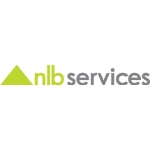© 2025 Next Level Business Services Inc. All Rights Reserved.
Top Recruitment KPIs for your recruiting dashboard
By NLB Services
Introduction – recruitment KPIs
Businesses leverage effective recruitment analytics to achieve notable hiring results in the talent acquisition KPIs landscape. Traditional recruitment models have become ineffective with time, and at the same time, the emergence and introduction of various modern hiring technologies can bring notable changes in the recruitment proceedings. Almost every visionary company has started investing in the latest recruitment analytics solutions with recruitment KPIs, and they’ve stopped relying on conventional hiring methodologies. Technological innovations in the recruitment industry have made HR professionals utilize data to access all the relevant insights.
Now, let us know more about the basics of recruitment analytics in our blog.
What Is Recruitment Analytics?
Recruitment analytics detects, interprets, and simplifies hiring patterns for sourcing, selecting, and onboarding candidates. It also concludes the types of data used to find and explain the hiring practices. For example, when the new hire leaves within the first three months of joining, it indicates a mismatch between the job description and the actual selection or a bad onboarding process. This is an example of recruitment analytics.
Recruiting analytics questions include-
- Which sourcing channel provides the best candidates?
- What was the cost of hiring for a position?
- What do the best candidate and the one interviewing have in common?
- Where is the recruitment funnel where most candidates drop out?
By answering these questions, the company can make effective recruitment decisions.
What Are Recruitment KPIs?
The full form of KPI is ‘key performance indicator. It is a quantifiable measure of performance measured within a specific time and for a particular objective. Recruitment KPIs are measured by providing targets to the hiring teams and then the progress milestones are gauged. After which the received insights help organization to make better decisions.
Recruitment KPIs are used to measure recruiting performance and process. Through hiring KPIs, companies get to know the area for improvement and show the return on investment for specific recruitment efforts. Key performance indicator helps to measure the recruitment process required for both popular HR performance metrics and unique recruiting methods. For example, KPIs are not only measured through the cultural fit and productivity levels, it is also measured through the total time taken to close the position, also by determining the channels through which candidates are sourced.
Level Up Your Tech Team! Discover Essential Tips in Our Tech Hiring Guide for Employers
Most Important Recruitment KPIs
Qualified candidates per open position
Multiple prospective needs to be measured in candidates’ application. The more applications, the more choices companies have to make a better hire. However, when applications are not qualified enough, it wastes time and effort. For doing a successful search to attain a qualified set of candidates, it is important to create robust job postings with readable job descriptions. Companies will only be able to connect with the right set of candidates and audiences if it is done properly at the right places. It might also mislead candidates to unrealistic expectations for the role.
Tracking the KPIs for recruiters is knowing the number of qualified candidates helps to gauge if you’ve reached the right set of audiences. When the qualified candidates ratio is low, it becomes high time to redo the job ads and improvise the efforts to reach the right prospects.
Time to hire
The total time taken to hire is measured through the time taken to shortlist, interview, and onboard the prospect after receiving the application. KPIs give you a fair understanding of how long it will take to hire for a position; hence, they can also help in planning an effective recruitment campaign.
Discovering strategies around hiring can help to reduce recruitment time. For example, when candidates begin their application forms, only a few finish them. It then becomes imperative for hiring agencies to gauge the length, accuracy and redundancy of the information you require from the prospect. A slow time to hire reduces an organization’s productivity and revenue. It also impacts the hiring quality since talented applicants may drop out of the application process.
Cost per hire
Any company sets up some budgets for activities like marketing or recruitment at the beginning of the year. Recruitment can be a costly affair when not done correctly. Allocating the budget at the outset of recruitment should also be given priority at the year beginning.
KPIs should be taken into account based on – posting job ads to the relevant boards, employee referral bonuses, job fairs, walk-ins, competition-based job entries, time spent interviewing applicants, etc.
Candidate job satisfaction
In the recruitment process, a candidate’s job satisfaction is a robust metric for tracking when job responsibilities and work expectations are set. The job responsibilities should be in sync with reality. It means there should not be any unrealistic expectations from the prospect. Companies should provide a realistic job preview by highlighting the pros and cons of job demands to the prospect. It will also mitigate the risk of lower candidate job satisfaction. Whenever there’s low candidate job satisfaction, it implies a poor or partial job description.
Applicants per opening
Applicants start to send their resumes and sometimes stop midway through as the application form is lengthy. They either get busy or find the number of fields cumbersome and confusing to be filled or self-reject themselves, thinking they don’t fit the job. But, as a word of caution, when the number of applicants abandoning the application midway gets high, it may tend companies to miss out on top talent. When recruiters connect with high-quality hires who qualify for the position, receiving a lower application rate isn’t the worst thing. It is advisable in the recruiting metrics dashboard to calculate the application completion rate and divide the number of submitted applications by the total number of candidates who started filling one out.
Recruitment funnel effectiveness
Establishing a recruitment funnel is the way to structure and shape the recruitment process. KPIs are a step-by-step method of narrowing down the recruitment funnel from the beginning to the closing of the position. Maintaining an effective recruitment funnel helps the recruiter manage the various hiring steps efficiently. An effective recruitment funnel can be divided into 7 major stages:
- Awareness
- Attraction
- Application
- Interest
- Pre-selection
- Interview
- Hiring
Managing these stages is very difficult, but it can be made easier by measuring recruitment metrics with the help of digital tools.
Conclusion
Nowadays, recruitment analytics are gaining importance amongst companies as it carries significant advantages. Contrary to popular belief, integrating recruitment analytics into the existing hiring process should be a manageable task. After analyzing business requirements, recruiters can easily make analytics an integral aspect of their hiring strategy by combining a feature-rich HR Recruitment process with recruitment tools or processes. With the help of top-notch analytics software, hiring managers can reach out to prospective job candidates much faster than ever.
Talent Solutions







